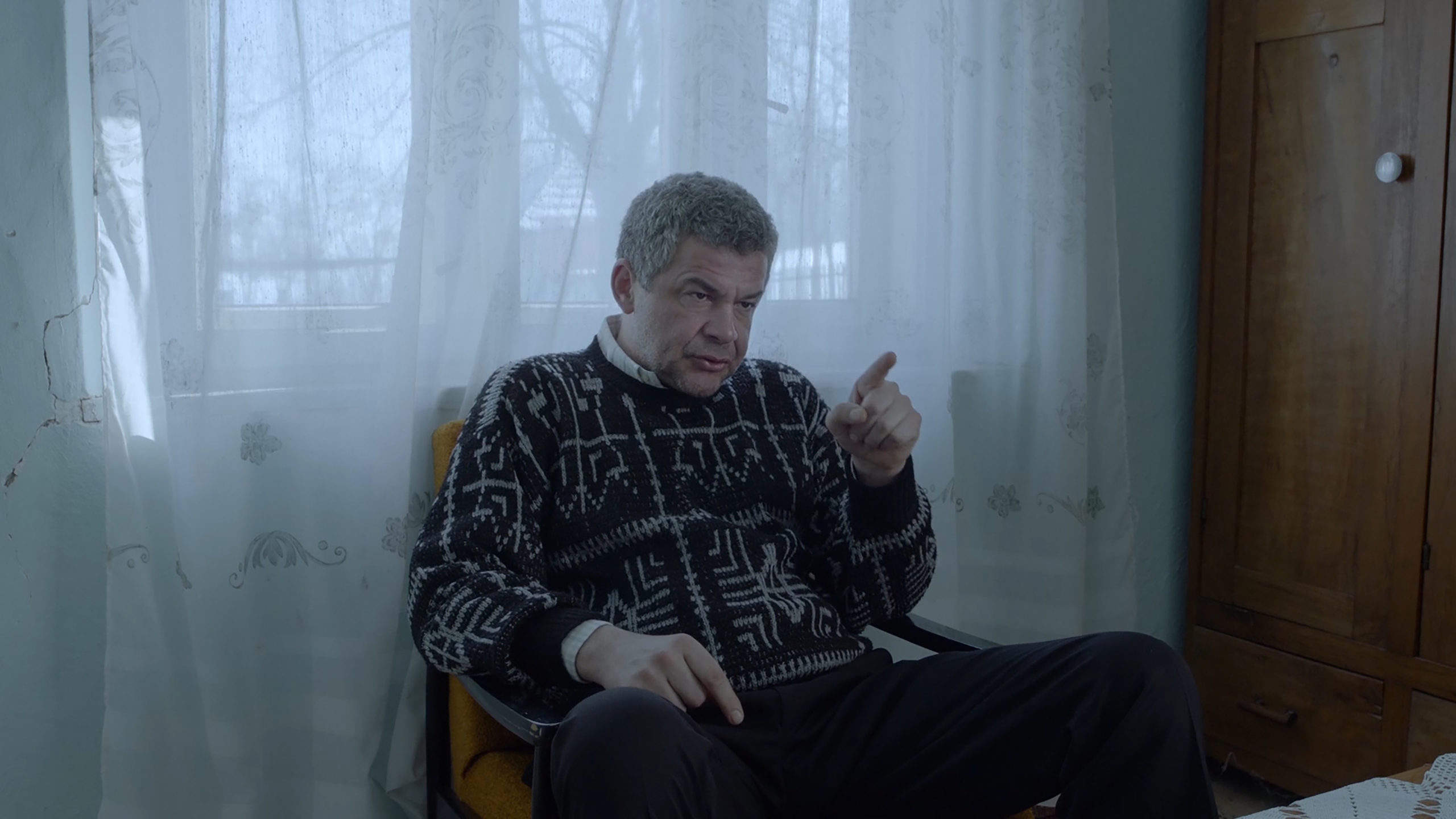
In the intro scene, we meet a young man who just woke up. It is cold inside the house; he goes to the kitchen and searches for the food. After a while, he goes to another room, complaining to an old man lying in bed about pancakes that he has allegedly eaten. We understand that the older man is the father. The young man goes back to the kitchen. His father comes in, drunk. The son is enormously irritated about the father’s mere presence in the house – and he breaks a window with his bare hands. The scene ends with his mother coming from work to take care of his damaged hand. The father is gone.
This first scene is paradigmatic and sets the tone for the entire film. Unequivocally, it is a film where formal elements, such as mise-en-scène, acting, lighting and scenography are inherent within the notions of the practices of an independent film production. One might say that the film is highly dependent on the budget. But My morning laughter (Moj jutarnji smeh, dir. Marko Djordjevic, 2019) is not a simple low budget film. The overall form of the film highlights and extrapolates distinctive possibilities that minimalistic film productions can offer.
The main character, Dejan, is a 28-year old high school history professor in a small Serbian town. He is a virgin and has clearly psychological issues with the fact that he has been under parental protection for his whole life. He is shy, warm and a bit clumsy. A colleague from Dejan’s school, where he teaches history, shows some interest in him but his passivity and inwardness impedes him from living a regular life. A visit to a clairvoyant – an amazing scene with one of the best actors in Serbia, the late Nebojša Glogovac in his last role as the oracle – slowly changes Dejan, though.
“My Morning Laughter” is a story about growing up. The film’s undertone can, in a broader sense, be understood as a narrative on long lasting effects of ”helicopter parenting” and a generation whose parents tried to save them from the harsh reality while growing up in the shadow of wars and state disintegration. There are no visible scars or traces from the conflicts in the 90s. But there is an aftermath. There are consequences, the economic transition, the brutal everyday life where not everyone is suited for the survival of the fittest. Thus, the time has come for the younger generations of grown-ups to take the responsibility but also to emancipate themselves.
As I already mentioned, the film is a brilliant and well-crafted, minimalistic and non-pretentious study, where the audience only gets to sense some underlying conflicts. Not very much is explained and there is no on-the-nose dialogue that might ”explain” the motives and goals of the characters. The audience is left with very little knowledge, which benefits the film enormously. This unpredictability creates a tense and believable narrative, where the dramaturgical structure invented for fiction is left behind for a more fragmented storytelling. The almost non-existent budget is very well “translated” within the locations, sets but also in the overall mise-en-scène. The static camera is patient and the long-takes reveal a lot about the characters, their inner and non-verbal fears.
Not only is the “aesthetics of mud” one of the most important parameters that links the film’s budget with the overall style. The actors are brilliant, from the sidekicks to the main characters. They are being portrayed with a lot of warmth, sadness and humor.
Sanjin Pejkovic
© FIPRESCI 2020
Edited by Karsten Kastelan
